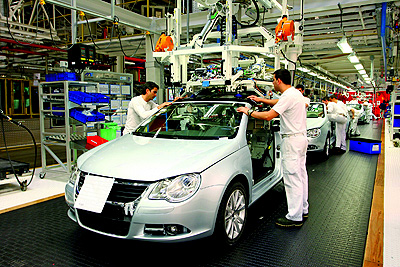Spacecraft dockings assist car assembly
29 January 2010
Car assembly has come a long way since the first production line was introduced in 1914. Today, much of the work is done by robots and computers, instead of by hand. The latest advance on the assembly line is a system that uses spacecraft docking technology.
Vehicle assembly lines use moving conveyor belts to transport the cars at a steady, but not constant, speed. Like a giant Lego, the car is put together at each assembly point along the way. When a dashboard or other section is attached to the car, the mounting is done by a manipulator – a large, manually controlled robot. The manipulator must move at exactly the same speed as the belt so that the car is not damaged.
The system that is now on trial at Volkswagen’s Autoeuropa factory in Palmela, Portugal, was developed by MDUSpace, with support from ESA. It is based on technology that enables automatic docking between ESA’s Automated Transfer Vehicle (ATV) spacecraft and the International Space Station. The ATV uses a camera to identify light pulses reflected from targets on the Station. By analysing the light patterns, the control software works out the precise distance and angle to the docking port.
In the same way, the new car assembly system combines a live camera feed with computer software for object recognition. The operator chooses points on the car as targets, so that the system can calculate their distance from the manipulator. The system then ensures that the robot and the car are moving at exactly the same speed and are correctly positioned at all times.







